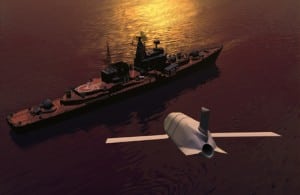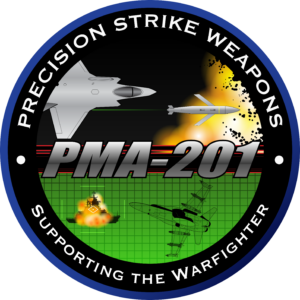The Navy awarded Lockheed Martin [LMT] and
Raytheon Technologies [RTX] $116 million in contracts on March 27 to start developing anti-ship air-launched hypersonic weapons that can be based on aircraft carriers, with the preliminary design phase ending next year.
The service is aiming for this system, dubbed the Hypersonic Air Launched Offensive Anti-Surface (HALO) weapon, to help the Navy operate and control contested spaces in littoral waters and anti-access/area denial (A1/AD) environments, largely referring to waters closer to China.

The Navy announcement noted it hopes to start fielding this capability over the next decade.
“HALO will be a carrier-based, high speed, long range air-launched weapon that will provide greater anti-surface warfare capability than what’s available today,” the service said in a statement.
These first contracts are meant to cover technical maturation and development through preliminary design review of the propulsion system required for a carrier-suitable hypersonic weapon system. The contract performance period lasts through December 2024 when each vendor’s preliminary design review will lead to prototype flight tests.
The Navy underscored HALO is a successor program to the Long Range Anti-Ship Missile (LRASM) currently fielded on the Navy’s F/A-18s and Air Force B-1Bs.
“As threat capability continues to advance, additional range, warfare capability and capacity is required to address the more demanding threat environment. “Our team is leveraging science and technology and rapid prototyping arenas to support aggressive schedule execution,” Capt. Richard Gensley, Precision Strike Weapons (PMA-201) program manager, said in a statement.
The announcement also noted that “to bridge the gap until HALO is operational, the Navy recently funded an upgrade to the [LRASM] existing weapon which will incorporate missile hardware and software improvements to enhance targeting capabilities.”
This HALO program is part of the Navy’s larger Long Range Fires investment approach to meeting National Defense Strategy objectives, particularly putting a prioritization on hypersonic weapons.
The Navy said these initial contracts could lead to further development and production contracts based on initial designs and supplier performance to inform department leadership on future program decisions.

The service also said it plans to seek a competitive acquisition strategy that will leverage LRASM requirements and concept of operations “to meet future maritime threats beyond mid-2020s.”
The initial operational capability for HALO is currently planned to be fielded before the end of the 2020s.
HALO is in addition to the Conventional Prompt Strike (CPS) hypersonic weapon program, which the Navy plans to start fielding on Zumwalt-class destroyers and Virginia-class submarines later this decade. The Army is working on its Long Range Hypersonic Weapon (LRHW), which is being jointly developed with the Navy’s CPS, as they will share the same all-up missile round, canister and Common Hypersonic Glide Body, with the main difference being launchers.
The LRHW is first set to deploy later this year, before Navy installation, tests and deployments are completed in the coming years.
The Air Force is also working on two hypersonic weapon programs, the Lockheed Martin AGM-183A Air-launched Rapid Response Weapon (ARRW) and Raytheon Hypersonic Attack Cruise Missile.